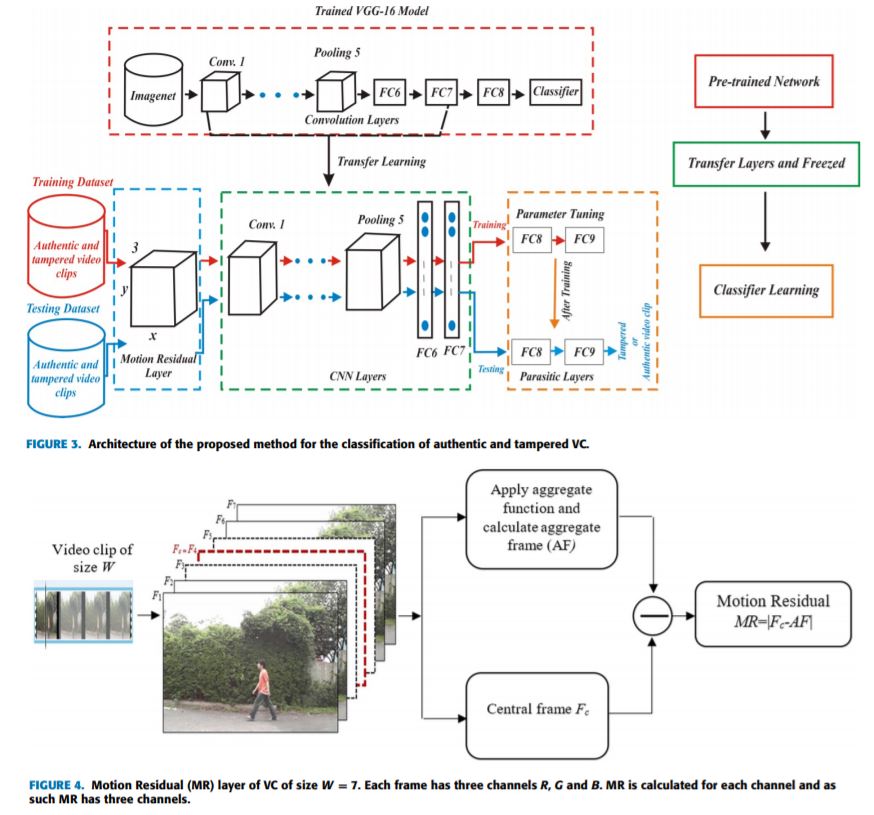Abstract:
These days, videos can be easily recorded, altered and shared on social and electronic media for deception and false propaganda. However, due to sophisticated nature of the content alteration tools, alterations remain inconspicuous to the naked eye and it is a challenging task to differentiate between authentic and tampered videos. During the process of video tampering the traces of objects, which are removed or modi ed, remain in the frames of a video. Based on this observation, in this study, a new method is introduced for discriminating authentic and tampered video clips. This method is based on deep model, which consists of three types of layers: motion residual (MR), convolutional neural network (CNN), and parasitic layers. The MR layer highlights the tampering traces by aggregation of frames. The CNN layers encode these tampering traces and are learned using transfer learning. Finally, parasitic layers classify the video clip (VC) as authentic or tampered. The parasitic layers are learned using an ef cient learning method based on extreme learning theory; they enhance the performance in terms of ef ciency and accuracy. Intensive experiments were performed on various benchmark datasets to validate the performance and the robustness of the method; it achieved 98.89% accuracy. Comparative analysis shows that the proposed method outperforms the state-of-the-art methods.
Keywords: Spatial forgery detection, motion residual, deep learning, extreme learning machine, parasitic learning.


